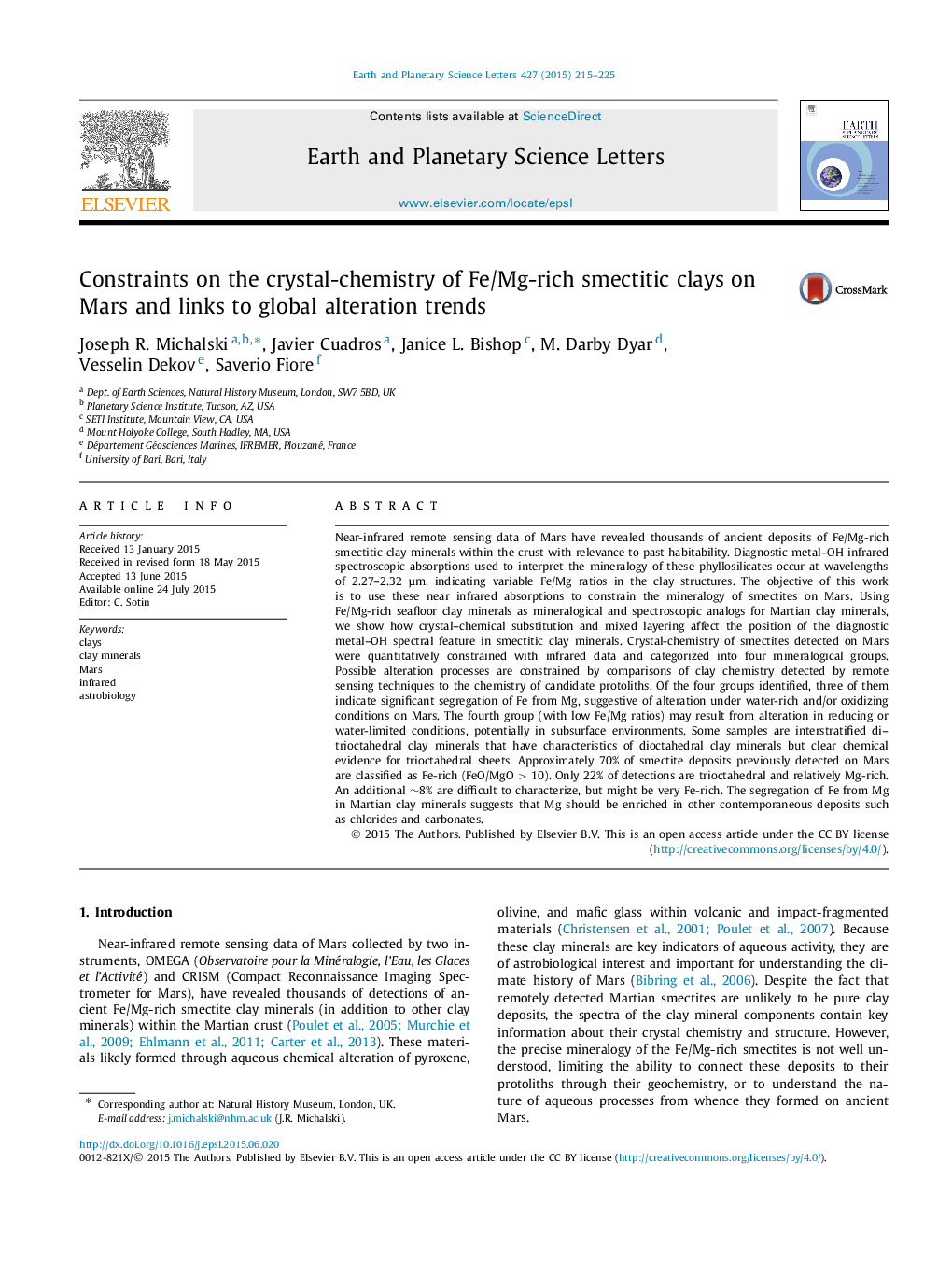| کد مقاله | کد نشریه | سال انتشار | مقاله انگلیسی | نسخه تمام متن |
|---|---|---|---|---|
| 6428089 | 1634729 | 2015 | 11 صفحه PDF | دانلود رایگان |

- We constrain the mineralogy and chemistry of Martian smectitic clays from infrared data.
- Martian smectites include mixed-layer varieties such as complex di-trioctahedral clays.
- Most Martian smectitic clays are dioctahedral and Fe-rich, with FeO/MgO ratios >10.
- Clay-forming alteration processes on Mars segregated Fe from Mg.
Near-infrared remote sensing data of Mars have revealed thousands of ancient deposits of Fe/Mg-rich smectitic clay minerals within the crust with relevance to past habitability. Diagnostic metal-OH infrared spectroscopic absorptions used to interpret the mineralogy of these phyllosilicates occur at wavelengths of 2.27-2.32 μm, indicating variable Fe/Mg ratios in the clay structures. The objective of this work is to use these near infrared absorptions to constrain the mineralogy of smectites on Mars. Using Fe/Mg-rich seafloor clay minerals as mineralogical and spectroscopic analogs for Martian clay minerals, we show how crystal-chemical substitution and mixed layering affect the position of the diagnostic metal-OH spectral feature in smectitic clay minerals. Crystal-chemistry of smectites detected on Mars were quantitatively constrained with infrared data and categorized into four mineralogical groups. Possible alteration processes are constrained by comparisons of clay chemistry detected by remote sensing techniques to the chemistry of candidate protoliths. Of the four groups identified, three of them indicate significant segregation of Fe from Mg, suggestive of alteration under water-rich and/or oxidizing conditions on Mars. The fourth group (with low Fe/Mg ratios) may result from alteration in reducing or water-limited conditions, potentially in subsurface environments. Some samples are interstratified di-trioctahedral clay minerals that have characteristics of dioctahedral clay minerals but clear chemical evidence for trioctahedral sheets. Approximately 70% of smectite deposits previously detected on Mars are classified as Fe-rich (FeO/MgO > 10). Only 22% of detections are trioctahedral and relatively Mg-rich. An additional â¼8% are difficult to characterize, but might be very Fe-rich. The segregation of Fe from Mg in Martian clay minerals suggests that Mg should be enriched in other contemporaneous deposits such as chlorides and carbonates.
Journal: Earth and Planetary Science Letters - Volume 427, 1 October 2015, Pages 215-225